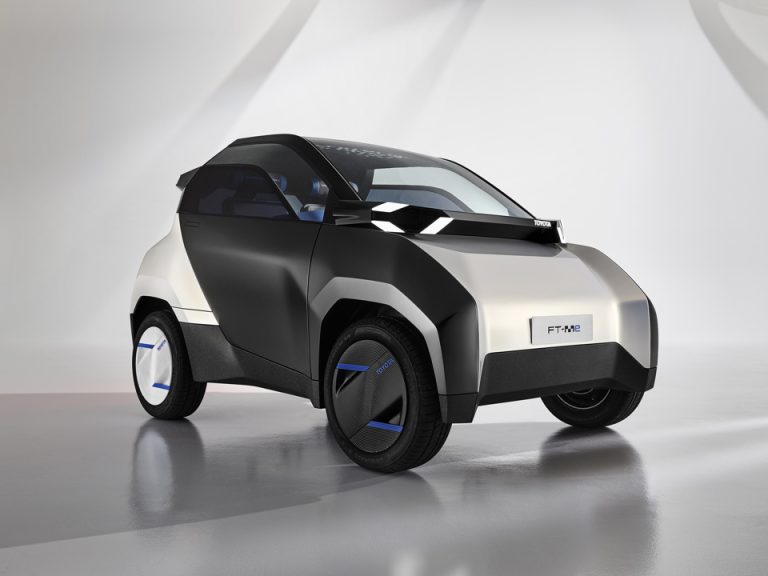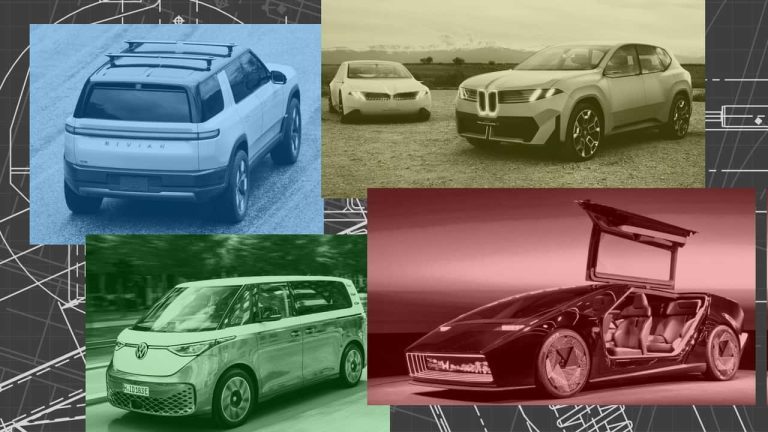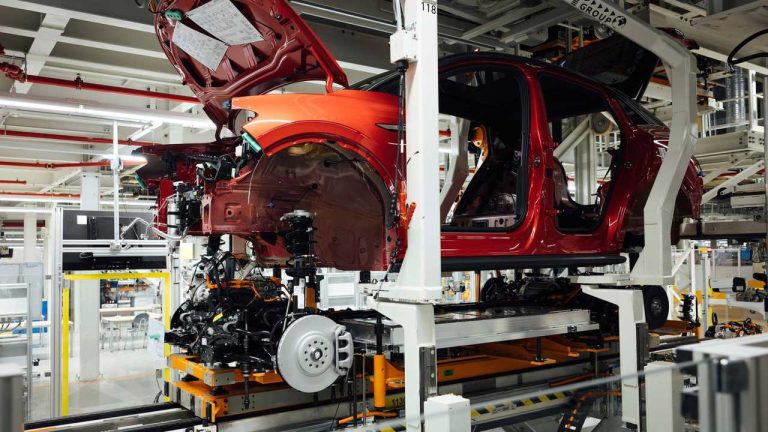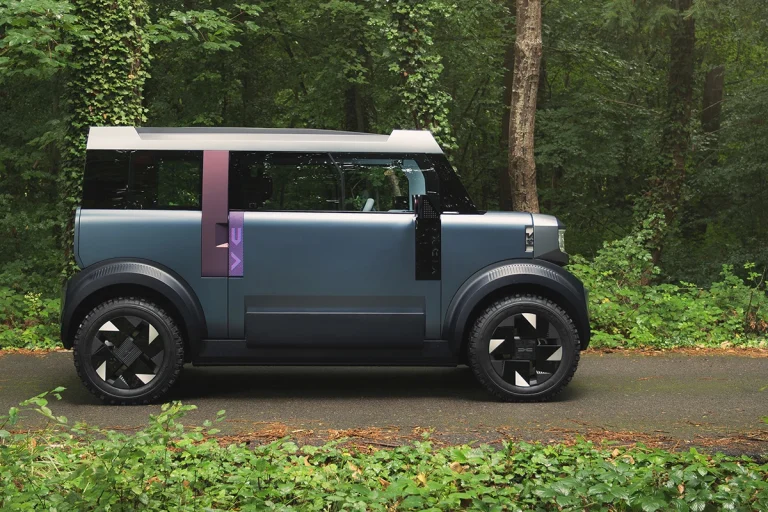Chinese Electric Speed Demon BYDs Mighty 2960 Horsepower Car Surpasses 293MPH Barrier


Chinese Electric Supercar: Redefining Speed and Power in the Automotive World
The world of high-performance vehicles is undergoing a dramatic transformation as Chinese electric supercars shatter long-held records and challenge the dominance of traditional gas-powered machines. The recent feat achieved by the YANGWANG U9 Track Edition, designed by Chinese giant BYD, represents not only technical brilliance but also a new mindset in automotive engineering. Observing these developments, one can’t help but appreciate how innovation, efficiency, and raw power are merging to create sports cars that push both the boundaries of speed and the limits of sustainable performance.
At an ATP Automotive Testing track in Papenburg, Germany, on August 8, the record-breaking speed of 293.7 mph was reached by the U9 Track Edition—an accomplishment that jolts the industry and compels the established automotive giants to reconsider their approaches. This editorial takes a closer look at the critical factors of this accomplishment, the implications for the future of electric vehicles (EVs), and how the industry is poised to tackle the tricky parts, tangled issues, and confusing bits of this rapidly evolving realm.
Evolution of Electric Vehicle Speed Technology
High-speed prowess was once the exclusive domain of gas-guzzling supercars built for raw power, but the scenario is rapidly shifting. The advanced engineering integrated into the YANGWANG U9 Track Edition demonstrates that electric propulsion systems can not only match but even exceed the speed of their gas-powered counterparts.
Automotive experts have long debated whether electric vehicles could truly deliver the kind of performance that excites car enthusiasts. The record set by the U9 Track Edition evidences that with the right innovations, such as the ultra-high-voltage systems and specially designed thermal management protocols, EVs can indeed approach—if not surpass—a performance threshold traditionally expected only from combustion engines.
Key features to note include:
- Massive Power Output: The U9 Track Edition’s four independent electric motors collectively deliver an astounding 2,960 horsepower, pushing the limits of what most consider achievable on an electric platform.
- Optimized Power-to-Weight Ratio: With an impressive 1,341.5 horsepower per ton, the vehicle manages torque distribution across all four wheels, enhancing stability and handling even at record speeds.
- Ultra-High Voltage Platform: Operating on a 1,200-volt system, it ensures energy efficiency across components—from motors to cooling mechanisms—which is essential for extreme performance conditions.
This evolution represents a significant turning point, deepening our understanding of the technological breakthroughs needed to achieve such feats. The U9 Track Edition not only breaks speed records but also highlights the potential for rapid advancements in electric vehicle engineering.
Innovative High Voltage Battery Design Impacts EV Performance
The battery is the heart of any electric vehicle, and the YANGWANG U9 Track Edition takes its power source to a new level. Its design uses BYD’s lithium-iron-phosphate “Blade” battery, a format that has been tailored to offer both efficiency and durability.
This unique battery design features a flat, rectangular configuration that allows for exceptional cooling—a key factor in sustaining peak performance. A well-optimized cooling system is essential, especially when pushing the car to its speed limits. It helps manage the natural heat produced during intense driving conditions, ensuring that the battery retains optimal charge and functionality throughout prolonged use.
Other features of the battery system include:
- Enhanced Energy Density: The rectangular shape and innovative layout increase the battery’s energy density, meaning more power is delivered within a smaller, more efficient space.
- Rapid Charging Capability: In a testament to everyday usability, the battery can charge from 30% to 80% in just thirty minutes, which makes it far more practical for everyday adventures despite its high performance orientation.
- Robust Thermal Management: Engineers incorporated a finely tuned thermal management system which ensures that even during extended high-speed runs, the battery remains stable and functional.
The advance in battery technology isn’t just an incremental improvement—it challenges longstanding perceptions about the limitations of electric vehicles. By addressing the tricky parts and hidden complexities usually associated with battery performance, manufacturers are paving the way for an entirely new class of vehicles that intertwine speed, efficiency, and sustainability.
Electric Supercar Performance Compared to Gas-Powered Rivals
One of the most contentious debates in automotive circles is whether electric vehicles can truly match or exceed the prowess of gas-powered supercars. The performance of the Chinese electric supercar at a record 293.7 mph forces us to re-examine this discussion. For decades, the allure of supercars was rooted in the explosive power and signature sound of a combustion engine, but today’s innovations are challenging this narrative.
Traditional supercars are revered for their raw power and tactile feedback; however, they are often bound by some significant disadvantages:
- Fuel Dependency: High-performance combustion engines require expensive and increasingly environmentally taxing fuels.
- High Maintenance: Gasoline engines come with complicated pieces and numerous moving parts that frequently need meticulous upkeep.
- Environmental Concerns: The emissions produced by gas-powered cars contribute significantly to global pollution challenges.
Electric vehicles, on the other hand, offer an alternative that cuts through these limitations. With zero tailpipe emissions, smoother torque delivery, and innovations like the ultra-high-voltage system, electric supercars present a compelling case not just for sustainability, but also for sheer performance. They manage to overcome many of the nerve-racking intricacies of traditional supercar engineering, presenting a cleaner, faster, and more efficient option to enthusiasts.
These developments push established brands to figure a path between tradition and modernity. While many legacy manufacturers continue to champion combustion technology, the transformative energy of electric propulsion is nudging them into a new era of design and performance philosophy.
Cutting Edge Manufacturing Techniques for Electric Vehicles
As electric vehicles ramp up to the forefront of automotive innovation, the manufacturing techniques that build these machines are also evolving. The U9 Track Edition is not only a testament to electrical performance but also to breakthrough production methods that emphasize precision and quality at every step.
Advanced techniques that are now in the mix include:
- 3D Printing and Rapid Prototyping: Modern supercars employ cutting edge manufacturing practices, such as 3D printing, to produce highly detailed components quickly. This method allows for minute adjustments and testing of fine points without needing to overhaul entire production lines.
- Robotic Assembly Lines: Automated assembly ensures that even the most intricate parts of the vehicle are uniformly constructed, reducing human error and streamlining the production process.
- Precision Engineering of Battery Cases: The layout of the “Blade” battery is optimized using advanced simulation and precision molding techniques, a process that has been refined to address the tangled issues and hidden complexities of battery design.
These methods not only contribute to the overall efficiency of the production process but also ensure that the final product meets an exceptionally high standard. In the fast-paced environment of automotive innovation, being able to smoothly manage your way through trial and improvement cycles can distinguish the winners from the laggards. In many respects, the manufacturing excellence behind the U9 Track Edition signals that the future of automotive performance is as much about engineering prowess in the factory as it is about innovation on the test track.
Critical Considerations: Cost, Safety, and Practicality
For electric supercars to establish themselves as true alternatives to traditional high-performance cars, several tricky parts must be addressed—cost, safety, and everyday practicality. Although the primary aim is to showcase speed and engineering marvel, the technology must also translate seamlessly into a viable consumer product.
Cost: High-performance electric technology involves sophisticated components like premium batteries, advanced cooling systems, and lightweight materials such as carbon fiber. This complexity implies that the price tags will likely reflect the nerve-racking development costs. High-ticket electric supercars may remain niche items at first, but as production scales are increased, it is expected that costs will moderate over time.
Safety: Driving at speeds approaching 300 mph raises obvious safety concerns. While advanced electronic stability programs and high-grade braking systems are integral, the physical risk associated with such speeds remains a point of contention among critics. Despite these challenges, regulatory agencies and manufacturers are actively taking measures to improve safety standards and to ensure that the engine’s red-line performance does not compromise passenger security.
Practicality: Although the U9 Track Edition has demonstrated a remarkable capability on a race track, questions remain regarding its usability for everyday commutes or long trips. The practical application of a vehicle designed for extreme conditions calls for careful consideration on how such advanced systems will integrate with regular driving patterns, especially in urban environments. However, the impressive charging capabilities and the extended range offered by the new battery technology go a long way in alleviating these concerns.
A table summarizing these key considerations might look like this:
| Factor | Considerations | Current Challenge |
|---|---|---|
| Cost | High development and production expenses | Balancing performance with affordability |
| Safety | Need for advanced braking and stability systems | Ensuring protection at extreme speeds |
| Practicality | Integration of high-speed technology into everyday use | Combining race-track capability with urban functionality |
This exploration of cost, safety, and practicality reveals that although electric supercars represent a breakthrough in performance, they are still navigating through a maze of everyday challenges. As manufacturers learn to sort out these tricky parts and manage your way through the little details, the consumer market for high-performance EVs is likely to broaden, ushering in a new era of practical supercars.
Environmental Impact and the Sustainability Factor
One of the most compelling arguments in favor of transitioning to electric vehicles—especially in the supercar segment—is sustainability. The advent of electric technology tackles many of the environmental challenges that gas-powered vehicles are notorious for. With zero tailpipe emissions and reduced reliance on fossil fuels, high-speed electric cars are stepping into the spotlight as models of future mobility that are both exciting and sustainable.
While the average consumer might find sustainability an abstract concept when juxtaposed with thrilling performance numbers, the broader implications are significant. Here are some sustainability highlights:
- Reduced Carbon Footprint: Electric vehicles significantly lower greenhouse gas emissions, even when accounting for battery production. This shift is critical in a world grappling with climate change and environmental degradation.
- Energy Efficiency: The introduction of a 1,200-volt platform not only boosts performance but also ensures that energy is used in the most productive way possible across components. This means that even as speeds soar, the vehicle maintains an impressive level of efficiency.
- Cleaner Future: The transition to electric propulsion is part of a larger narrative aimed at creating a sustainable global transport network. As infrastructure adapts—charging stations become more ubiquitous, and battery recycling improves—the environmental benefits will only multiply.
Furthermore, the environmental argument often extends to discussions on government policies and business tax laws, which increasingly favor greener technologies. Incentives for electric vehicle production and ownership are pivotal in shifting consumer sentiment and stimulating market demand for sustainable automotive solutions. With supercars like the U9 Track Edition demonstrating that green technology can also be synonymous with extreme performance, the benchmark for environmental responsibility in high-speed automotive design has been reset.
Recent Industry Reactions and the Competitive Landscape
The groundbreaking performance of the YANGWANG U9 Track Edition has left the automotive landscape buzzing with debate. Industry veterans and up-and-coming manufacturers alike are closely tracking these developments, weighing the impact on future design strategies and competitive dynamics.
Some key reactions from the industry include:
- Shift in R&D Budgets: Traditional manufacturers are now pouring more resources into electric powertrain development. This shift is partly in response to newly defined performance benchmarks that were once thought unattainable for EVs.
- Redefinition of Supercar Standards: With electric vehicles challenging the dominance of gas-powered supercars, performance standards are being redrafted. Classic performance metrics—previously measured solely in horsepower—are now being accompanied by efficiency, energy management, and even charging times.
- Collaborations and Partnerships: Industry leaders are increasingly entering strategic partnerships to share advanced technologies. For example, collaborations in battery development and high-voltage systems tend to diffuse the risk and complexity of innovative pursuits, which is especially important when working through the nitty-gritty of high-performance electric engineering.
In many ways, the current competitive landscape is reminiscent of the early days of automotive innovation when every manufacturer was trying to figure a path through the little twists and subtle details of system design. Now, while some companies choose to stick with traditional combustion engines, others are diving in with disruptive, off-the-charts advancements in electric supercar technology. Such a diverse market scenario ensures that rapid improvements in performance and efficiency are not only inevitable but also eagerly awaited by consumers around the world.
Consumer Perspectives on High-Speed Electric Vehicles
While enthusiasts celebrate the record-breaking speeds and trailblazing technology of electric supercars, everyday consumers have their own set of expectations and concerns. The debate is not just about extreme performance; it’s also about how these innovations translate into better driving experiences and overall value for money.
Some common sentiments among potential EV buyers include:
- Practicality in Daily Use: Despite the appeal of attaining speeds that rival those of gas-powered supercars, many consumers wonder about the usability of these vehicles in everyday life. Issues such as charging infrastructure, maintenance, and overall cost of ownership continue to play critical roles.
- Access to Cutting Edge Technology: For many, the opportunity to own a piece of technological history—a car that redefines what an automobile can be—is a strong selling point. However, it must be balanced against the potential intimidation of handling such advanced systems.
- Market Evolution: There is cautious optimism that as the market matures, the nerve-racking aspects of extreme technological advancements will ease, making these vehicles not just for the elite, but for a broader segment of the population interested in both performance and sustainability.
In consumer forums and social media threads, potential buyers often engage in lively discussions about trade-offs between speed, luxury, and everyday practicality. These debates underscore not only the complicated pieces of the modern automotive landscape but also the persistence of traditional values in a rapidly evolving sector. In the end, the real impact of these technological leaps will be measured by how well they reconcile the thrills of the race track with the everyday nuances of driving, navigation, and sustainability.
Looking Ahead: The Future of Electric Performance Innovation
The achievements demonstrated by the YANGWANG U9 Track Edition signal a dramatic turning point in the automotive industry. The exciting development of ultra-high-powered electric vehicles marks just the beginning of a journey that will see conventional supercar paradigms reexamined and often replaced by a cleaner, more efficient vision of mobility.
As we take a closer look at where the automotive industry is headed, several trends are emerging:
- Rapid Technological Advancements: Continued investments in battery technology, thermal management, and power distribution promise a future where the boundaries of speed and performance are continuously redefined.
- Integrated Production and Innovation: The adoption of modern manufacturing techniques such as 3D printing and robotic assembly will further streamline the production process, enabling quick iterations that address both the trivial bits and the significant engineering challenges.
- Market Expansion: As the cost of innovative technologies decreases and as charging infrastructures expand, consumers across various demographics will be more inclined to adopt electric supercars, ultimately reshaping the luxury automobile market.
In essence, the future of high-speed performance is not just a matter of raw horsepower but a result of carefully crafted, super important details that ensure reliability, safety, and efficiency. As electric supercars continue to bridge the gap with their gas-powered counterparts, they simultaneously usher in an era where advanced engineering and sustainability stand shoulder to shoulder, making every high-speed adventure cleaner and more exhilarating.
Challenges Ahead: Overcoming the Tangled Issues in Electric Supercar Adoption
Despite the excitement and impressive metrics that accompany these record-shattering vehicles, a number of challenges still lie ahead. The path forward is loaded with problems that require careful consideration and strategic action. Here are some of the tricky parts that the industry must tackle:
- Regulatory Hurdles: Governments and regulatory bodies are still grappling with how to classify and regulate these advanced electric machines. The absence of standardized testing protocols means that authorities must work quickly to make your way through the legal frameworks while still ensuring public safety.
- Infrastructure Demands: As performance levels climb, so does the need for robust supporting infrastructures such as fast-charging stations and maintenance networks dedicated to high-voltage battery systems.
- Consumer Education: Many potential buyers are still getting into the concept of high-speed electric vehicles. Detailed, accessible information is necessary to help consumers sort out the small distinctions between different EV models, especially when deciding whether to step away from the established combustion models.
Addressing these issues requires collaboration among manufacturers, regulators, and industry experts. This joint effort can help ensure that the future of high-speed electric technology is both brilliant and sustainable. The objective is to figure a path that allows rapid technological evolution while mitigating the nerve-racking uncertainties that accompany such significant leaps.
Reflections on Tradition and the Shifting Tides in Automotive Culture
In many ways, the rise of electric supercars challenges deep-seated cultural beliefs and traditions. For decades, supercars have symbolized not just speed but a particular lifestyle steeped in power, thrill, and even rebellion. The raw roar of a turbocharged engine, the smell of burning fuel, and the tactile feedback of mechanical shifting have all played a central role in car culture. However, the rapid development of electric vehicles has introduced a new language in automotive design—a language that is quieter but no less intense in its performance narrative.
As enthusiasts digest these changes, several questions are front and center:
- Can electric supercars capture the same passion that gas-powered models once effortlessly did? The enthusiasm around record-breaking speeds and high-tech innovations suggests that the answer may well be yes.
- Will traditional brands adapt to these rapid improvements, or are we witnessing the dawn of a new automotive dynasty? It appears that even long-established names are beginning to embrace electric design, as evidenced by various collaborations and hybrid projects.
- How will this transition impact the broader market, particularly in terms of accessibility and everyday usability? As research deepens and production scales up, the hope is that the benefits seen in supercars may eventually influence mainstream vehicle design.
These reflections bring to light the balancing act required to honor tradition while driving forward into an era defined by sustainability, efficiency, and transformative speed. Observers of the automotive scene are now not only witnessing a technical revolution but also an evolution in cultural perspectives—a shift where raw power is measured not by exhaust roars, but by the silent efficiency and precision of electric engineering.
Final Thoughts: Embracing a New Era of High-Performance Electric Vehicles
The record-breaking performance of the Chinese electric supercar at 293.7 mph serves as an undeniable milestone that redefines our expectations of what modern propulsion systems can achieve. It challenges every preconception about the limits of electric performance and, in doing so, sets a new standard that manufacturers worldwide will be compelled to meet.
The journey from conceptual breakthroughs to tangible, earth-shattering records is filled with tricky parts and tangled issues. Yet, as we dig into the brilliant engineering, cutting edge manufacturing techniques, and practical considerations of battery efficiency and safety, one fact becomes clear: the future of automotive performance will be painted with a palette that fuses speed, sustainability, and sophistication.
Consumers, regulatory bodies, and industry watchdogs alike must now work together to steer through the complex parts of this transition. With continued innovation in high-voltage platforms and state-of-the-art battery design, the days when performance was the sole domain of combustion engines are numbered. The electric supercar is not just a fleeting trend—it is a harbinger of a new era where every mile traveled is a marriage of efficiency, power, and responsibility.
Looking to the horizon, we see much more than just faster vehicles. We envision a transportation ecosystem where the race for sustainable performance is as crucial as the pursuit of speed. Over time, as the market matures and the nerve-racking challenges are addressed, electric vehicles will undoubtedly dominate both the track and the road, reshaping urban transport and racing dynamics alike.
Key Takeaways
- Breakthrough Performance: The YANGWANG U9 Track Edition has reset the benchmark for electric supercar speed, delivering an awe-inspiring 293.7 mph through a combination of advanced powertrain design and ultra-high voltage technology.
- Innovative Battery Design: With its Blade battery, optimized for cooling and energy density, the U9 Track Edition dispels many of the nerve-racking myths about electric vehicle limitations.
- Manufacturing Advancements: New production techniques, including 3D printing and robotic assembly, are ensuring that the transition to electric supercars is not just a technological leap, but also a revolution in manufacturing efficiency.
- Sustainability and Efficiency: Electric vehicles are poised to significantly cut down on carbon emissions, presenting an environmentally friendly alternative that does not sacrifice performance.
- Future Challenges: The road ahead will require collaboration to smooth out complex legal, infrastructural, and consumer education challenges.
Embracing Change in a Fast-Evolving Industry
As electric supercars continue to make headlines and redefine the parameters of speed, enthusiasts and industry experts alike are faced with big decisions about where to place their bets for the future of the automotive world. The surge in electric technology is both a technical marvel and an inspirational leap that forces us to re-examine our understanding of speed, performance, and even the very notion of luxury in mobility.
In this era of rapid change, the ability to adapt, innovate, and embrace uncertainty becomes super important. Every twist and turn in this dynamic landscape is a reminder that the conversation about automotive performance is far from over—it’s only gathering momentum. Whether you’re a long-time aficionado of racing legends or a newcomer intrigued by the prospect of sustainable speed, the electric supercar era challenges us all to rethink what is possible on four wheels.
Conclusion
The record-breaking Chinese electric supercar embodies the future of high-performance design. Its bare-bones performance metrics, coupled with advanced battery technology and state-of-the-art manufacturing, illustrate an industry that is quickly shedding its old skin to reveal a new, electrified identity. As we watch this transformation unfold, it is our responsibility—as consumers, enthusiasts, and industry stakeholders—to support and guide this innovation toward a future where speed, safety, practicality, and sustainability coexist harmoniously.
In summary, the advancements presented by the YANGWANG U9 Track Edition are more than just numbers on a speedometer—they are a declaration that the electric vehicle revolution is here, challenging previous paradigms and paving the way for a future where high-octane excitement meets responsible innovation. As we celebrate these victories, we must remain mindful of the path ahead, working together to sort out the remaining challenges and embracing the inevitable evolution of mobility in the 21st century.
Ultimately, the question isn’t whether electric supercars can go fast—it’s whether our industry and society are ready to move at the speed of innovation. The answer is fast approaching with every record shattered and every tricky part managed. And in that exhilarating race towards the future, every revolution on the track speaks to a new chapter in automotive excellence.
Originally Post From https://leftlanenews.com/this-chinese-car-hits-293-mph-byds-2960-horsepower-electric-destroys-speed-records-while-german-driver-cant-believe-it/922/
Read more about this topic at
REVOLUTION
Revolution W World’s Fastest E-Bike




